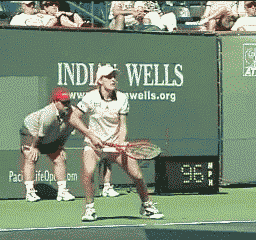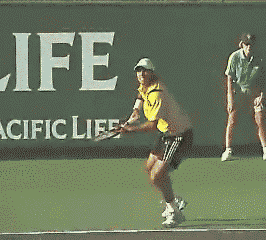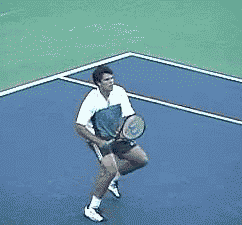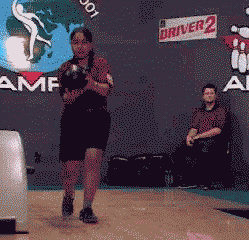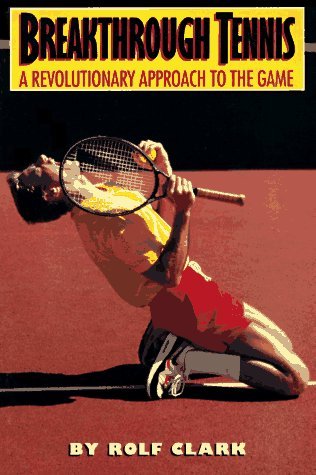|
TennisOne Lessons Timing and How to Explore It Rolf Clark If you've ever swung a child on a playground swing, you understand timing. You wouldn't push when the swing is still coming toward you, nor stop it at the top of its arc and delay letting it go. Those disrupt the rhythm. Instead, you help the swing move its own natural way. In the same manner, learn to help your racquet and body -- your tennis hitting system -- swing that way too. How Timing Affects Your Tennis Game
Timing is what enables a skinny 12-year-old girl to hit the ball harder than a 200-pound man whacking away with all his might. The adult fights against himself. The youngster smoothly helps the racquet along. Her muscles aren't strong enough to do otherwise. Timing means swinging your entire hitting system -- the combination of legs, body, arm, and racquet -- so smoothly that the full force of your momentum is transferred to the ball with very little effort. Your timing is right when you hit the ball perfectly. You swing smoothly, and the ball zings over the net deep and hard. We've all felt those efficient shots. On some days we hit many of them, on others, very few. The aim is to hit all balls with perfect timing. When your game is off check your timing. Let's see how. Pendulums and Momentum The pendulum on a grandfather's clock swings smoothly back and forth with perfect timing. Learn to swing that way. Your hitting system is like the clock's pendulum. Every pendulum has its own natural timing and momentum, depending on the pendulum's length and mass. A short pendulum swings rapidly. A long heavy pendulum swings slowly, with lots of momentum. Momentum puts power into your shot.
In physics, momentum is defined as mass times velocity. So to get more power, you can either swing faster, or use more mass. Think of the huge wrecking balls swung from construction cranes to demolish buildings Wrecking balls swing very slowly, but with enormous momentum. Your body, arm, and racquet comprise a more complicated pendulum than a clock or a wrecking ball, but the concepts of timing and momentum still apply. But you don't swing just your racquet. You swing your arm, or your arm and shoulders, or your arm, shoulders, and torso, along with the racquet. Actually you swing different masses -- different hitting systems -- depending on the shot you're making. For a deep ground-stroke, you use your whole body. For an approach shot, you might swing just from the shoulder. For a drop shot, you tend to use only your forearm and racquet. The difference between people and the clock pendulum is that people have muscles, which in tennis can be a disadvantage. Muscles can be used to force your hitting system to swing in unnatural rhythms. Momentum Comes From Your Whole Hitting System The more momentum you use, the more power is transferred to and through the ball. More momentum means more racquet speed is maintained as the ball leaves the racquet face. A fast, but lightweight swing will not carry racquet speed through the ball, and a weaker shot is the result. Let me expand on this not well known concept. It is not just racquet speed that determines shot momentum. Momentum is absorbed by the ball during the short time the racquet is in contact with the ball. Racquet speed at the instant of first contact with the ball will be higher than racquet speed as the ball leaves the racquet because the ball absorbs some racquet momentum as it is forced to change direction from coming toward you to going back. That slows the racquet. If more momentum is applied, that is if there is more mass in the swing, then more momentum will be transferred to the ball. Thus racquet speed is not the only determinant of ball speed. Mass is equally important. This is why some players seem to swing so slowly, but still maintain a heavy ball return. They apply more mass than someone who wings fast but slaps the ball, say, only a strong arm movement.
On ground-strokes, your racquet is not the main source of the momentum transferred to the ball. Your arm and torso are. I'm an average-sized man. My right arm weighs about ten pounds while my racquet weighs less than one pound. When I hit the ball, my arm produces a lot more momentum than my racquet. If I swing all of my body weight along with my arm and racquet, I generate even more momentum. In other words, don't swing just the racquet when you explore power hitting. Explore power by feeling the swing of your entire hitting system: racquet, arm, torso, and legs combined. An Array of Pendulums is Available to You A small pendulum swings faster than a large pendulum. Your body has many different pendulums to use. The backswing/forward swing sequence needs to be a lot quicker and shorter when you hit a rushed volley than when you hit a full groundstroke. If you swing just your forearm and racquet, you'll be hitting with a relatively short, light pendulum that can react quickly for these volleys. For normal groundstrokes -- those in the backcourt -- swinging your whole body and arm is better. That means you'll swing more slowly, but in the backcourt there is time to execute this more powerful swing. Exploring Timing Hold a racquet with your hitting hand, letting your arm and racquet hang comfortably downward. Hold the racquet loosely in your fingers so your wrist is free to move. Let the racquet swing from the wrist and try not to force it. Get the feeling of this wristy swing.
Now swing your whole arm and racquet as a unit from your shoulder. Keep the wrist and elbow from bending. Let the swing occur, don't force it. Maintain a gentle grip. If you are doing this effortlessly, the swing rhythm of your whole arm will be much slower than by swinging just from the wrist. Next, swing your whole body, arm and racquet as one large hitting system, swinging your hips and torso and using your legs to help. Swing your whole body smoothly by turning your torso from side to side as you shift your weight from one foot to the other. When you swing from the wrist, your swing is short and fast. When you swing from the shoulder, the swing becomes slower and longer. When you swing your whole body, the overall swing is longer and slower still. Swing these different hitting systems until you can swing each one, effortlessly. Think about the clock's pendulum and try to swing whichever hitting system you're testing as smoothly as a pendulum. Then try hitting on the court with a practice partner. Experiment with swinging until you understand the perfect rhythm for each shot you will need to react to and hit. When to Start the Swing Newton's third Law of motion says for every action there is an equal and opposite reaction. To roll a bowling ball down the alley, you first swing it back behind you, then swing it forward and let it go.
In tennis, you swing the racquet back and then swing it forward, neither rushing or nor delaying. That's action and reaction at work. If you bring your racquet back too early, you end up delaying the forward swing while you wait for the ball. If you react late to the ball you compensate by pulling the racquet back suddenly and then forcing it forward. Either way, the result is poor timing and a poorly hit ball. You wouldn't do that with a bowling ball. The ball is too heavy. Bad timing would lead to injury. You swing it back and let it swing forward when it's ready. In tennis, however, the racquet is relatively lightweight. It's easy to commit errors in timing without realizing it. If the racquet is to meet the ball at the right time, then the forward swing must react naturally to the back-swing, without delay. That, in turn, means the back-swing must start at the right time -- not too late, nor too early. Your comments are welcome. Let us know what you think about Rolf Clark's article by emailing us here at TennisOne.
|

